TLDR: Devices with small gaps (~1mm) can get away with conduction based thermal simulations.
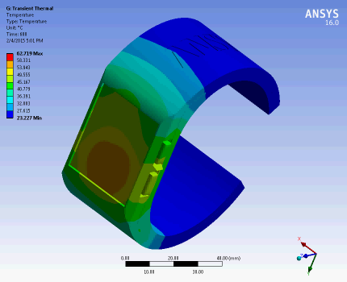
Temperature on a fictional ANSYS wristband.
Small gadgets are cool and they sell like hot cakes.
A persistent issue with small devices is they tend to get hot and it is hard to get the heat out. Most devices need to get rid of heat through their outer surfaces. When you make’em small, the surface area shrinks fast and they get hot. Sometimes tiny little fans and blowers are added… then it gets really complicated.
Background
Like many problems in fluid dynamics, we have handy dimensionless numbers to guide us.
The Rayleigh Number

It describes the ratio of heat transfer via natural convection vs diffusion. Since the Rayleigh number is a function of the length^3, it means when the air gap is large, natural convection dominates. When the air gap is small, diffusion/conduction dominates.
This makes intuitive sense. Do we really expect there to be air moving around in very small spaces?
When we use a basic diffusion solver instead of a full CFD solver, we get to go home early! (1 vs 5 pdes)
The question is when can we get away with treating natural convection as just a conduction problem, or how small of an air gap is small enough?
Plug some numbers into the formula above? Nahh, I like to do simulations so I’ll just plug a few numbers into ANSYS.
Conduction vs Convection
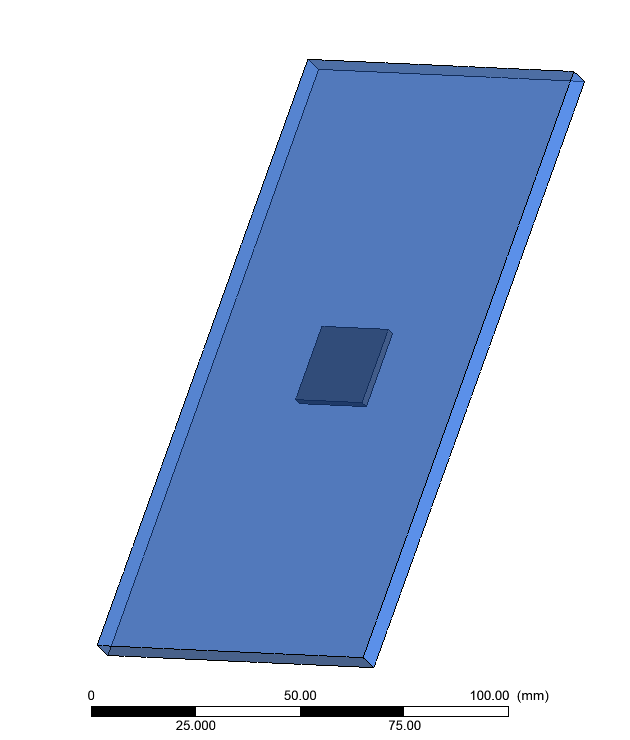
Say you have a very… very empty electronics gadget. Lots of open spaces.
The model is an empty box the size of a cell phone with a chip (hot block) inside. We will compare the results of the conduction simulation with the air modeled as a conductor to a cfd based natural convection simulation.
Let’s see how much difference there is to the temperature on the chip.
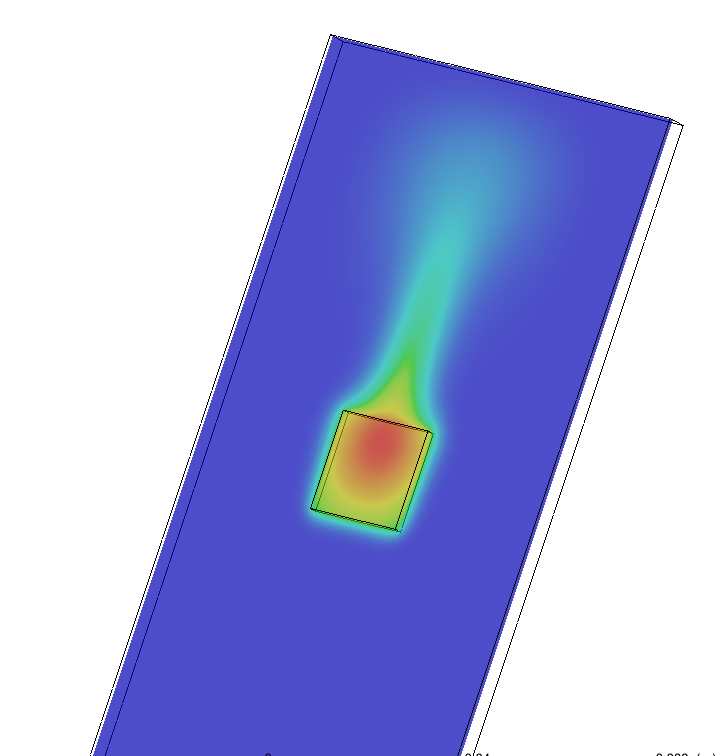
Convection thermal
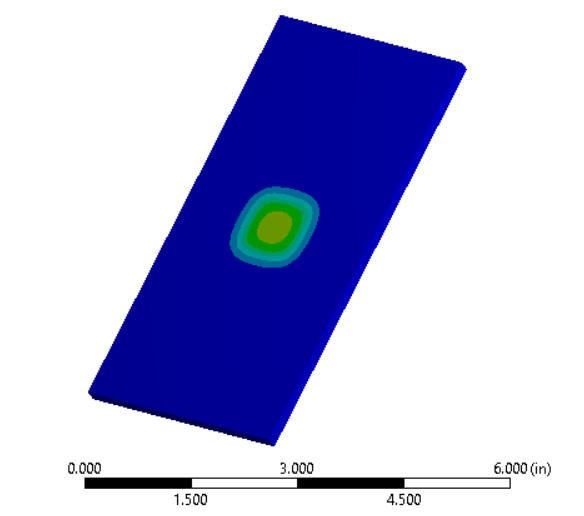
Conduction thermal
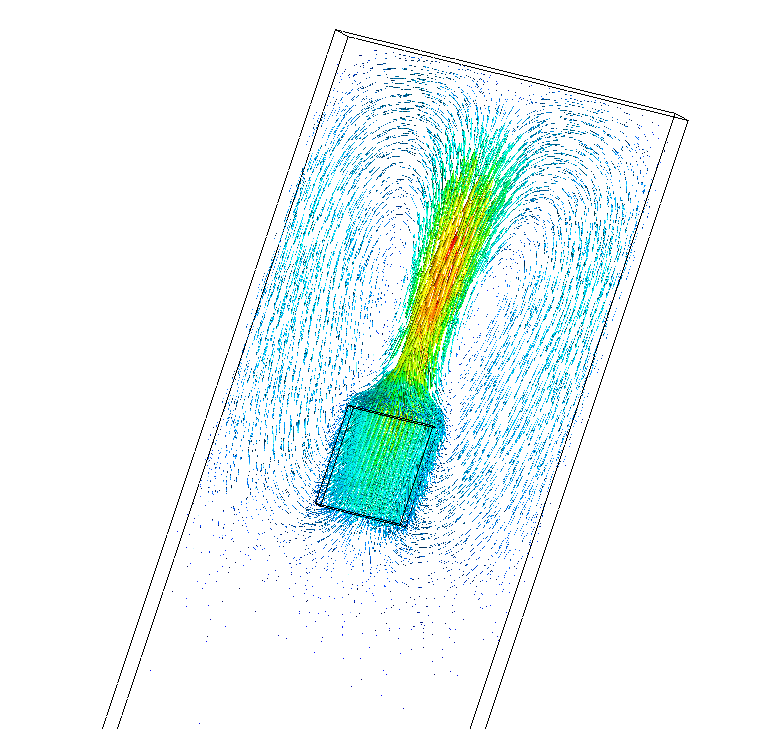
There is definitely some natural convection going on in there!
There is a whole lot of empty space in there. So let’s see what happens when we change the size of our box.
Since the model is fully parameterized, we can do a quick DOE and optimization study.

Chip temperature error is primarily a function of distance to wall.
The sensitivity graph shows that the error on the chip is primarily dependent on the gap between the chip and the housing.

Chip temperature error vs distance to wall
As we see in the picture above, we can keep the temperature error on chips under 3 degrees if we have around 1mm of gap.
So if we are looking at small hand held devices, then conduction through air is often an acceptable assumption. If there are large gaps in the device then air circulation becomes important and CFD thermal tools should be used.
Easy, Peasy!
Like these posts? Heart us below.
Got electronics cooling issues? We’d be happy to help.
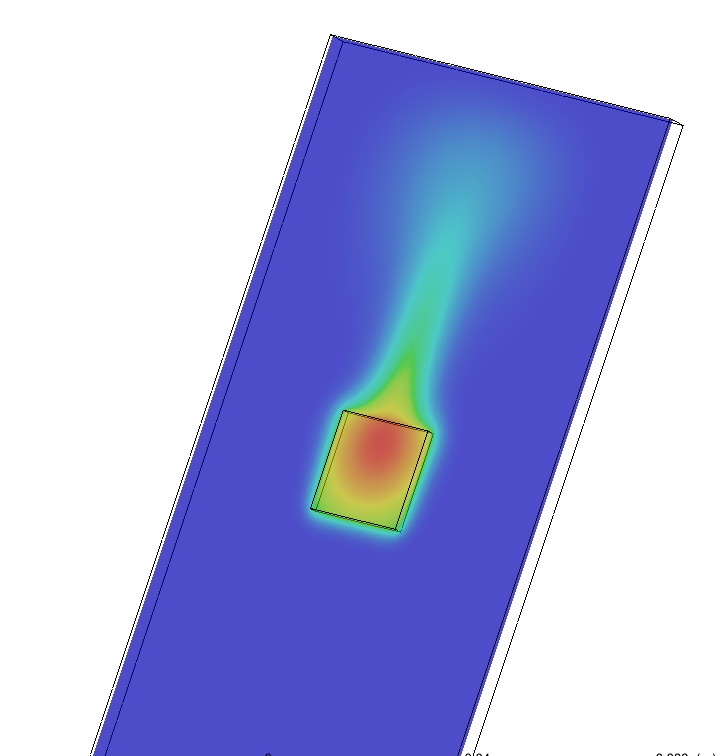
Jan 16, 2019 10:40:00 AM
